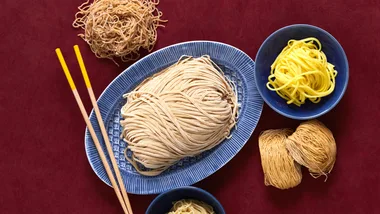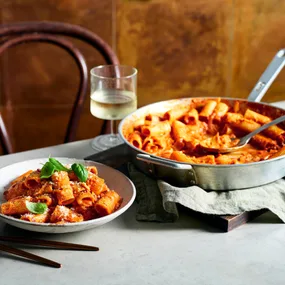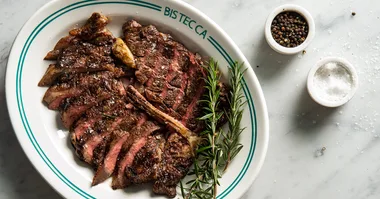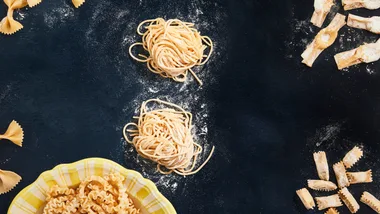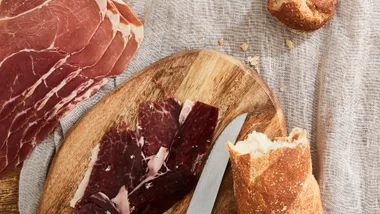Whether eaten plain or transformed into the most luxurious French toast or bread-and-butter pudding, brioche is one of the world’s greatest breads.
Brioche would have to be one of French cuisine’s greatest gifts. Buttery, rich and moreish, what’s not to love? Although it’s classified as a bread, it’s so much more, and comes in all shapes and sizes. There’s the widely recognised brioche à tête, or Parisian brioche, where the dough is placed in fluted tins and topped with a smaller ball of dough to form a “head”. Or the ring-shaped brioche Bordelaise, studded with candied fruit and crowned with crushed sugar cubes. Or it can be formed, as we have, into a simple loaf (you could also make this recipe into six mini loaves).
As brioche is made with a yeasted dough, there are a few key points to remember. Have the milk lukewarm and all other ingredients at room temperature to assist the activation of the yeast and the proving of the dough. Pay particular attention to the consistency of the butter. It should be very soft, but in no way melted – dice it and leave it at room temperature for several hours before you start mixing. It will incorporate more easily into the dough at this consistency.
The way you work the dough is very important and you’ll need an electric mixer fitted with a dough hook to do it. Unlike other bread recipes where you can get away with hand-kneading, elbow grease just won’t cut it here. Add the butter little by little, beating all the while, and make sure each addition is incorporated before adding more. Beat well until the dough is shiny, smooth and elastic.
Brioche is double-proved, once in the bowl and again after it has been shaped, so allow plenty of time for this. Some recipes – usually those for the more buttery brioche mousseline, or rich man’s brioche, shaped into a tall cylinder – call for the first proof to take place overnight in the refrigerator so that the dough is much easier to mould. But this isn’t necessary for the recipe here. Cover the bowl with plastic wrap or a tea towel and stand in a warm, draught-free place. Usually preheating the oven will be enough to warm your kitchen to a suitable temperature for proving.
Brioche is a star in its own right, and needs little in the way of embellishment. Simply sliced, toasted and served for breakfast with homemade jam – or your favourite shop-bought variety – and crème fraîche, it’s a revelation. Or cube it and turn it into the most luxurious bread-and-butter pudding you’ve ever had. It also lends itself to savoury applications, but if you plan to serve it in this manner, omit the sugar crust and just brush it with eggwash for a glossy golden finish. It’s great toasted and slathered with a rich duck liver pâté, or topped with garlicky sautéed mushrooms. The dough can also be used as a casing, say for a classic salmon coulibiac or fillet of beef en croûte.
The infamous proclamation “Let them eat cake!” in fact refers to brioche, and was said to be uttered by Queen Marie Antoinette in response to the French poor who protested they had no bread to eat. The irony is, of course, that brioche is a luxury bread, rich with butter and eggs. Some say these words weren’t uttered by the queen but rather by an anonymous French princess. Whatever. As far as we’re concerned, no further encouragement is required. And for a variation fit for the royal court at Versailles, try this chocolate-filled French toast instead. Let them eat cake, indeed.


